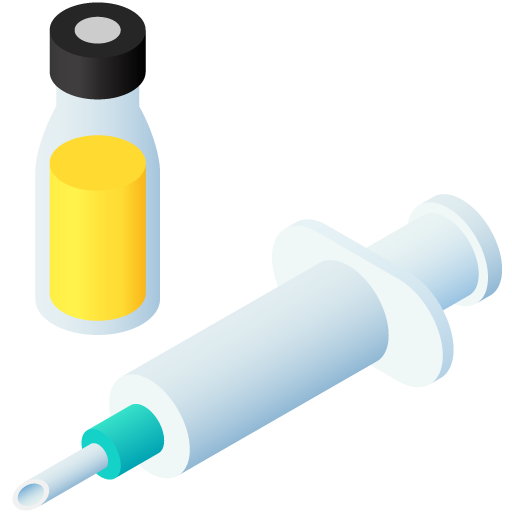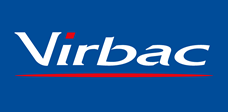Combination therapy
No results were found for your selected species
Nobilis Rismavac + CA126
Active substance
ATC code
Species
Chickens
Indications
For the active immunisation of chickens to reduce mortality, clinical signs and lesions after infection with Marek’s disease virus.
Dose to be administered and administration route
Day-old vaccination:
Inject 0.2 ml reconstituted vaccine to each bird subcutaneously in the neck or intramuscularly in the leg using a 20g x 1/2" needle with an approved repeating syringe or automatic vaccinator.
In-ovo vaccination:
Inject one dose of the reconstituted vaccine to each 18-day embryonated egg with an appropriate automatic in ovo vaccinator. The actual volume per dose may depend on the settings of the in ovo vaccination equipment. This should not be less than 50µl or more than 100µl. Depending on the volume to be administered the vaccine should be reconstituted according to the instructions below. The egg should be in an upright position with the blunt side up.
Reconstitution:
The actual volume of solvent per dose needed for reconstitution of the vaccine may depend on the number of doses per ampoule, the route of administration and for in ovo on the settings of the vaccination equipment. In the table below the volume of solvent per ampoule for the various dose-presentations, routes of administration and settings of the in ovo equipment are given.
|
|
Volume of solvent per ampoule needed for reconstitution of the vaccine |
||
|
Number of doses per ampoule |
sc / im (0.2 ml per dose) |
in-ovo (0.05 ml per dose) |
in-ovo (0.1 ml per dose) |
|
1000 doses |
200 ml |
50 ml |
100 ml |
|
2000 doses |
400 ml |
100 ml |
200 ml |
|
4000 doses |
800 ml |
200 ml |
400 ml |
|
5000 doses |
1000 ml |
250 ml |
500 ml |
Prior to reconstitution the vaccine is thawed. Great care should be taken - see operator warnings. Remove one ampoule from the cane and immediately replace the cane in the liquid nitrogen canister. Thaw the contents of the ampoule rapidly by immersing in water at room temperature. Do not thaw in hot or ice-cold water. Dry the ampoule and shake to disperse contents. After thawing open the ampoule immediately and draw the entire contents into a sterile 5 - 10 ml syringe using an 18 gauge needle to avoid rupturing the cells. Insert the needle through the stopper of the solvent vial (which should be at room temperature) and draw up slowly a portion of the solvent . Add the contents of the syringe to the remaining solvent . It is important that this is done slowly, allowing the vaccine to run down the side of the bottle. Gently shake the bottle as the vaccine is being mixed. Withdraw a portion of the vaccine and use to rinse the ampoule. Inject the washing back in to the solvent vial. The reconstituted vaccine must be handled gently and administered through wide gauge needles to avoid rupturing the cells. Fill the sterilised repeating syringe/automatic vaccinator according to the manufacturer’s instructions. The vial of reconstituted vaccine should be kept in an ice bath when not being used.
Adverse reactions
None
Dispensing
POM-VPS - Prescription Only Medicine – Veterinarian, Pharmacist, SQPSUMMARY OF PRODUCT CHARACTERISTICS
1. NAME OF VETERINARY MEDICINAL PRODUCT
Nobilis Rismavac + CA126
2. QUALITATIVE AND QUANTITATIVE COMPOSITION OF PRODUCT
|
Active ingredients |
per dose |
|
Live Turkey Herpes virus strain FC126 |
> 3.0 log10 PFU |
|
Live Chicken Herpes virus strain CVI-988 |
> 3.0 log10 PFU |
Excipients
For a list of excipients, see section 6.1
3. PHARMACEUTICAL FORM
Deep frozen suspension for injection after dilution and solvent.
4. CLINICAL PARTICULARS
4.1 Target species
Chickens
4.2 Indications for use
For the active immunisation of chickens to reduce mortality, clinical signs and lesions after infection with Marek’s disease virus.
4.3 Contra-indications
None
4.4 Special warnings for each target species
None
4.5 Special precautions for use
i. Special precautions of the use in animals
The presence of maternal antibodies to Marek’s can affect the efficacy of the vaccine.
The vaccine viruses spread; care should be taken to prevent such spread in multi-age sites.
A good immune response is reliant on the reaction of an immunogenic agent and a fully competent immune system. Immunogenicity of the vaccine antigen will be reduced by poor storage or inappropriate administration.
Immunocompetence of the animal may be compromised by a variety of factors including poor health, nutritional status, genetic factors, concurrent drug therapy and stress.
ii. Special precautions to be taken by person administering the product to animals
The operator should be aware of the general precautions to be taken when handling liquid nitrogen and/or material at very low temperature. Ampoules may explode on sudden temperature changes; therefore the operator should protect himself with thermal gloves and a visor. When removing an ampoule from a cane hold the palm of a gloved hand away from body and face. After handling vaccine operators should wash and disinfect hands with an approved disinfectant.
First aid treatment of frost bite injuries: Warm affected part by immersion in water at 29 ± 1ºC or use body heat. There will be considerable pain during warming, but this is normal. Do not rub affected area, seek medical advice.
4.6 Adverse reactions (frequency and seriousness)
None
4.7 Use during pregnancy, lactation or lay
Not to be used for birds in lay.
4.8 Interactions with other medicinal products and other forms of interaction
No information is available on the safety and efficacy of this vaccine when used with any other veterinary medicinal product. A decision to use this vaccine before or after any other veterinary medicinal product therefore needs to be made on a case by case basis.
There is evidence that some antibiotics may interference with the performance of Marek’s vaccines if mixed for administration.
4.9 Amounts to be administered and administration route
Day-old vaccination:
Inject 0.2 ml reconstituted vaccine to each bird subcutaneously in the neck or intramuscularly in the leg using a 20g x 1/2" needle with an approved repeating syringe or automatic vaccinator.
In-ovo vaccination:
Inject one dose of the reconstituted vaccine to each 18-day embryonated egg with an appropriate automatic in ovo vaccinator. The actual volume per dose may depend on the settings of the in ovo vaccination equipment. This should not be less than 50µl or more than 100µl. Depending on the volume to be administered the vaccine should be reconstituted according to the instructions below. The egg should be in an upright position with the blunt side up.
Reconstitution:
The actual volume of solvent per dose needed for reconstitution of the vaccine may depend on the number of doses per ampoule, the route of administration and for in ovo on the settings of the vaccination equipment. In the table below the volume of solvent per ampoule for the various dose-presentations, routes of administration and settings of the in ovo equipment are given.
|
|
Volume of solvent per ampoule needed for reconstitution of the vaccine |
||
|
Number of doses per ampoule |
sc / im (0.2 ml per dose) |
in-ovo (0.05 ml per dose) |
in-ovo (0.1 ml per dose) |
|
1000 doses |
200 ml |
50 ml |
100 ml |
|
2000 doses |
400 ml |
100 ml |
200 ml |
|
4000 doses |
800 ml |
200 ml |
400 ml |
|
5000 doses |
1000 ml |
250 ml |
500 ml |
Prior to reconstitution the vaccine is thawed. Great care should be taken - see operator warnings. Remove one ampoule from the cane and immediately replace the cane in the liquid nitrogen canister. Thaw the contents of the ampoule rapidly by immersing in water at room temperature. Do not thaw in hot or ice-cold water. Dry the ampoule and shake to disperse contents. After thawing open the ampoule immediately and draw the entire contents into a sterile 5 - 10 ml syringe using an 18 gauge needle to avoid rupturing the cells. Insert the needle through the stopper of the solvent vial (which should be at room temperature) and draw up slowly a portion of the solvent . Add the contents of the syringe to the remaining solvent . It is important that this is done slowly, allowing the vaccine to run down the side of the bottle. Gently shake the bottle as the vaccine is being mixed. Withdraw a portion of the vaccine and use to rinse the ampoule. Inject the washing back in to the solvent vial. The reconstituted vaccine must be handled gently and administered through wide gauge needles to avoid rupturing the cells. Fill the sterilised repeating syringe/automatic vaccinator according to the manufacturer’s instructions. The vial of reconstituted vaccine should be kept in an ice bath when not being used. 4.10 Overdose (symptoms, emergency procedures, antidotes)(if necessary)
No adverse effects anticipated. Occasional microscopic lesions might be seen after in ovo vaccination. No specific treatment or antidote recommended.
4.11 Withdrawal periods
Zero days
5. IMMUNOLOGICAL PROPERTIES
ATC Vet Code: QI01AD03
Pharmacotherapeutic group: Immunologicals for aves, Domestic fowl, Live viral vaccines
Vaccine contains cell associated live Turkey and Chicken Herpes viruses to stimulate active immunity against Marek's disease in chickens.
6. PHARMACEUTICAL PARTICULARS
6.1 List of excipients
Cell concentrate:
Bovine serum
Veggie medium Dimethyl sulfoxide
Solvent: Sucrose
Sodium Chloride
Disodium hydrogen phosphate dihydrate
Phenolsulfonphtalein (Phenol red)
Potassium dihydrogen phosphate
Water for injections
6.2 Major incompatibilities
Do not mix with other veterinary medicinal products.
6.3 Shelf life
Vaccine
Shelf life of the cell concentrate as packed for sale: 4 years Shelf life after dilution or reconstitution according to directions: 2 hours when kept at +2°C to +8°C.
Solvent
Shelf life of the solvent (multilayer plastic bags) as packaged for sale: 3 years.
6.4 Storage precautions
Cell concentrate:
Store in liquid nitrogen at a temperature below ≤ -150ºC Thawed ampoules must not be refrozen.
Do not expose reconstituted vaccine to direct sunlight or heat.
Solvent:
Store below 30°C.
Container:
Store liquid nitrogen container securely in an upright position in a clean, dry and well-ventilated room separated from the hatching/chicken room.
6.5 Nature and composition of immediate packaging
Cell concentrate: 1000, 2000, 4000 and 5000 dose ampoules of hydrolytical class type I (Ph.Eur) glass containing the cell suspension. The ampoules are heat sealed.
The ampoules are inserted in metal canes and shipped and stored in a liquid nitrogen container.
Solvent:
- One 200 ml multilayer plastic bag.
- One 400 ml multilayer plastic bag.
- One 500 ml multilayer plastic bag.
- One 600 ml multilayer plastic bag.
- One 800 ml multilayer plastic bag.
- One 1000 ml multilayer plastic bag.
- One 1200 ml multilayer plastic bag.
- One 1600 ml multilayer plastic bag.
6.6 Precautions for disposal of unused veterinary medicinal product or waste material derived from the use of such product.
Dispose of waste material by boiling, incineration or immersion in an appropriate disinfectant, approved for use by the competent authorities.
7. MARKETING AUTHORISATION HOLDER
MSD Animal Health UK Limited
Walton Manor, Walton
Milton Keynes
Buckinghamshire
MK7 7AJ
8. MARKETING AUTHORISATION NUMBER
Vm 01708/4354
9. DATE OF FIRST AUTHORISTION
13 November 1997
10. DATE OF REVISION OF THE TEXT
July 2022
Approved 21 July 2022


| Art. Nr. | 01708/4354 |
|---|---|
| EAN | 8713184085337 |
 TRUSTED SOURCE
TRUSTED SOURCE








